IN FOCUS: 'We are in a crisis right now' - Koh Samui enduring severe water shortages as tourism demand booms
Businesses and residents on one of Thailand’s most popular tourism islands face a daily reality of lacking water supplies, driving a private water business boom and raising deeper questions about sustainable development.
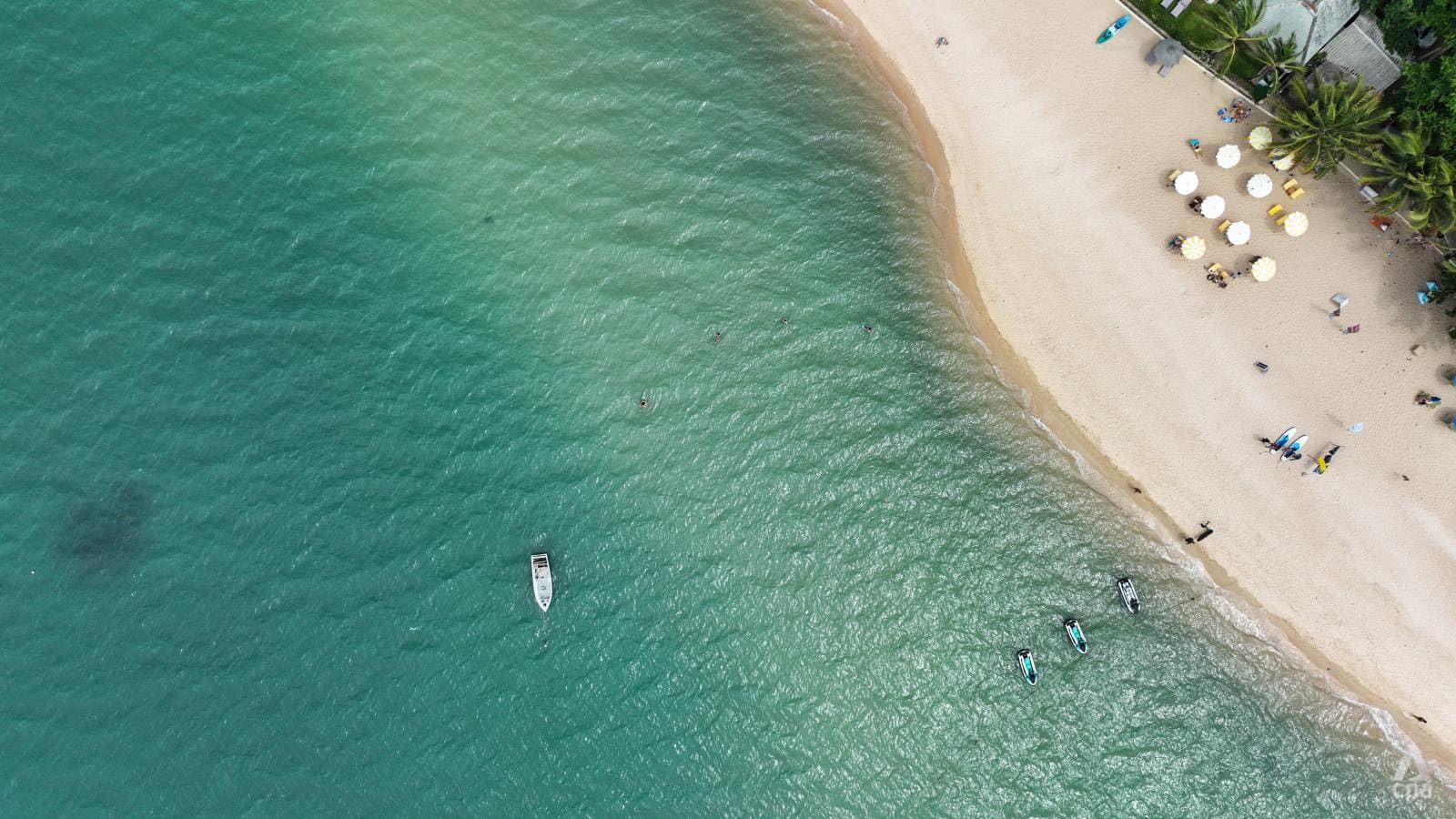
Koh Samui is a tourist magnet, yet suffers from a severe lack of resources. (Photo: CNA/Jack Board)
KOH SAMUI, Thailand: Just a few blocks back from the shimmering lights and pool parties along Koh Samui’s famous white beach strip, young men in pickup trucks are keeping the island functioning.
They are water runners. A rudimentary pump system extracts groundwater from deep below the surface before it is filtered and then tapped into waiting vehicles.
For 14 hours a day, Mr Sarayut Lanlongsa drives his truck supplying water to various businesses across the island. He could work even longer hours if he wanted - the demand exists. For his own health, he has drawn a line.
Other small water delivery businesses like his work around the clock. Koh Samui has never been so thirsty.
The popular tourism hotspot remains in the grip of a full-blown water shortage crisis. For months, a combination of drought conditions, unreliable infrastructure and booming tourist arrivals has left authorities largely unable to service the population.
Private water operators have stepped in to save the day and are reaping the dividends.
“In the past, our customers were luxury villas on the high ground because they have swimming pools, which need a lot of water. However, recently our customers are all around,” Mr Sarayut said.
During these hot, dry days, the 32-year-old expects to make up to 40 trips to different customers, delivering 2,000 litres of water each time. Despite the emergence of multiple copycat businesses, he does not fear the new competition on Koh Samui’s busy streets.
“The water demand keeps rising,” he said.
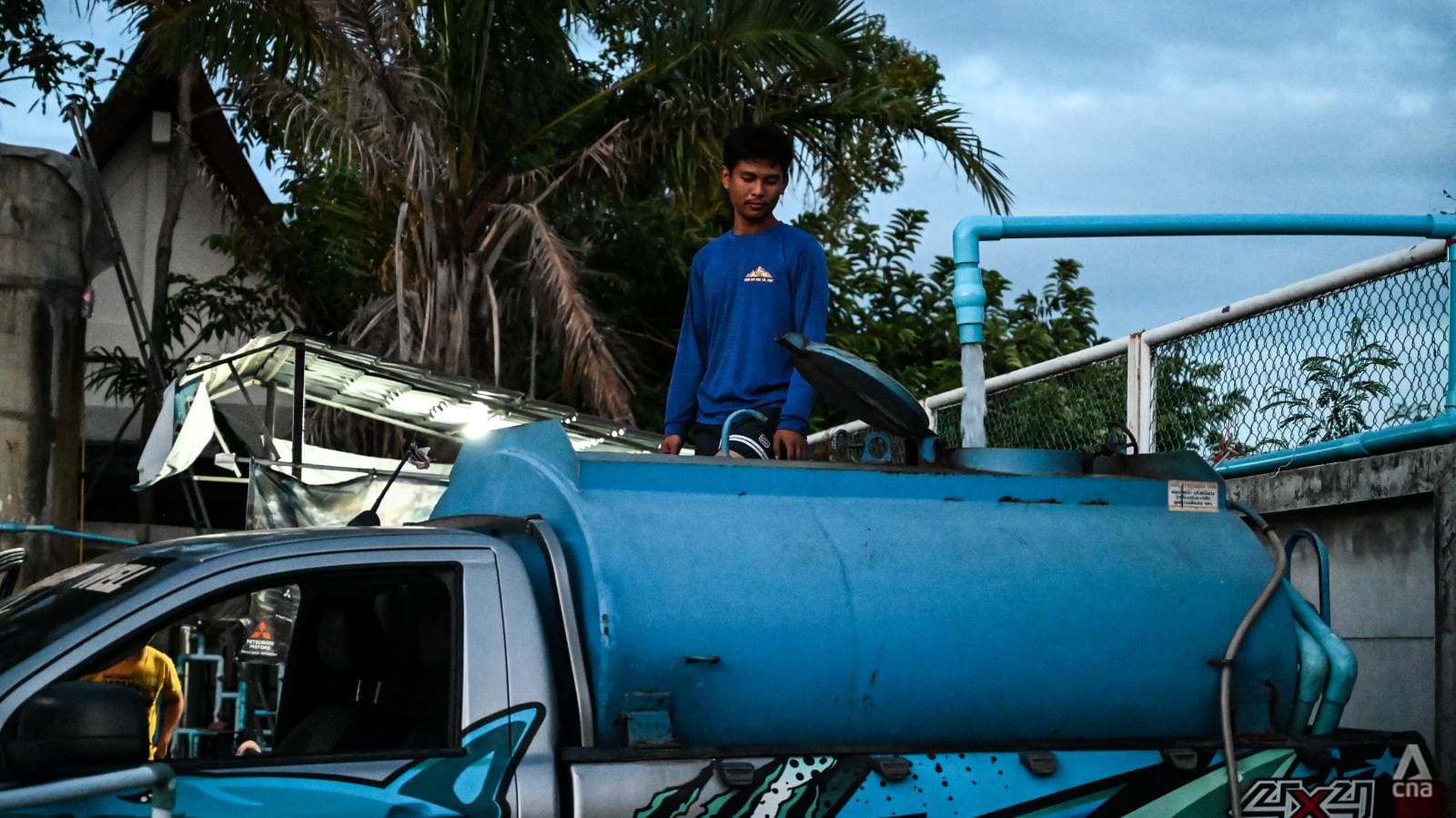
THE "FREE STATE"
The nature of small islands means that freshwater supply can often be lacking. Koh Samui is no exception. It has four main reservoirs, used mostly as an emergency backup in the event of prolonged dry spells.
Throughout history, many locals have relied on their own wells for their water needs. But the island is not what it used to be. The landscape has shifted dramatically and is desiccated as a result.
Back in the 1970s, Koh Samui emerged as a jungle escape for intrepid backpackers. Ever since, it has slowly transitioned from a stop on the hippie trail to a fully fledged luxury resort destination.
Before 2014, there was a restriction of 36 flights per day to the island’s sole privately owned commercial airport, which was built in 1989. It was a bottleneck that reduced visitor numbers.
This year, in July alone, 2,268 flights - 74 per day on average - serviced the island, contributing to visitor numbers quickly reaching pre-pandemic peaks.
Some 30,000 visitors were expected on Koh Samui on a daily basis this high season.
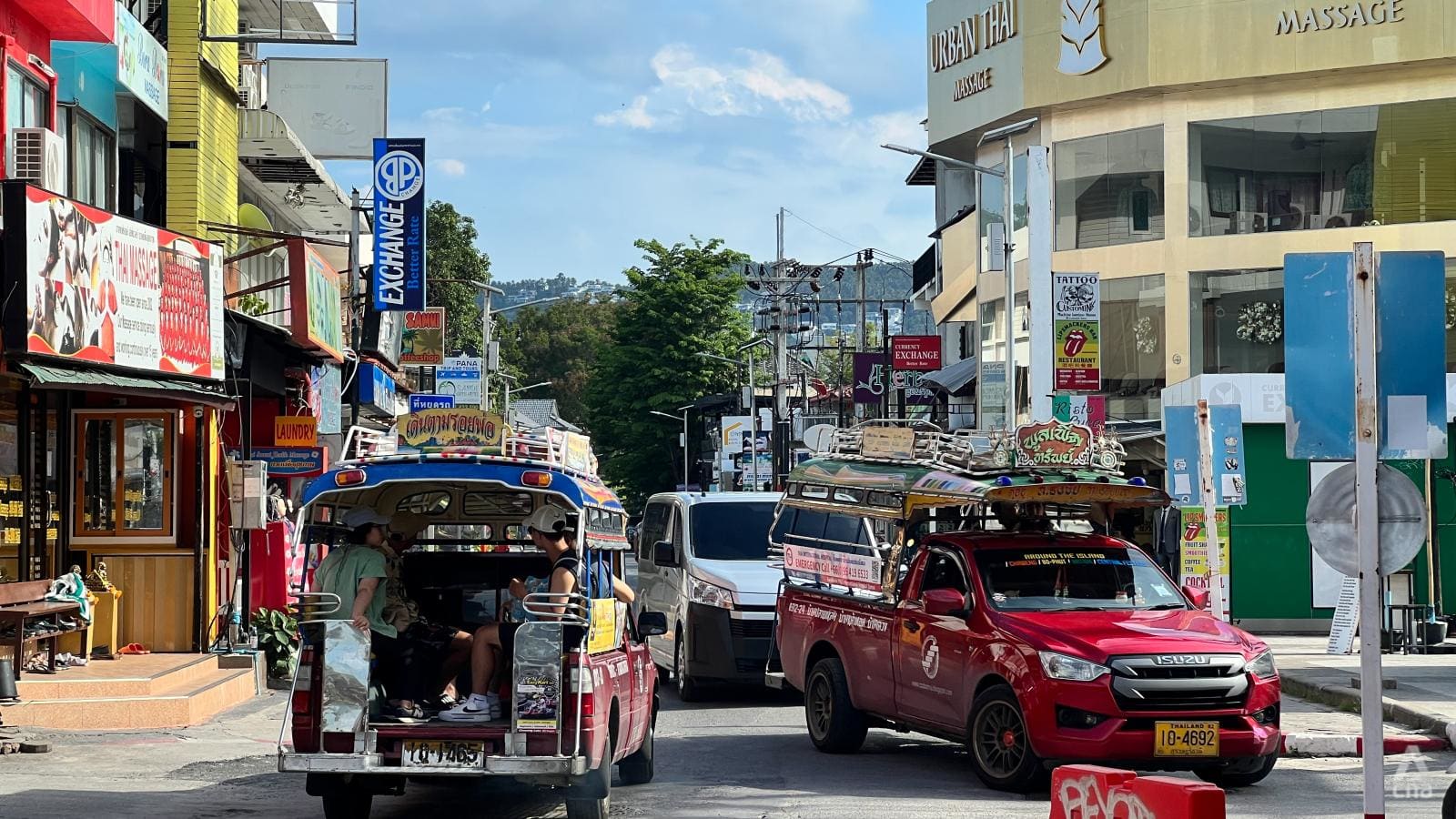
As hotel rooms and restaurants and golf courses and five-star villas have grown exponentially in number, so too has the burden on limited resources.
An aerial view on the approach to Koh Samui’s sole airport gives a glimpse at the hastened pace of development in Koh Samui’s mountains. Row after row of holiday villas stretch across cliff faces overhanging the sparkling Gulf of Thailand.
These are premium but previously untouched slices of land and the construction in many cases is illegal, according to Dr Kannapa Pongponrat Chieochan, an assistant professor at Thammasat University, who has done extensive research on sustainable development on Koh Samui.
This construction is one of the symptoms of deeper problems with local governance on Samui, she said. Koh Samui’s lack of proper rulemaking has made it akin to a “free state”.
“Do whatever you want to do. Build what you want to build and just operate,” she said.
“There's a lot of illegal construction, obviously, happening. Everything is so chaotic. And law enforcement is very weak because of political interference. So it's becoming worse and worse.”
Dr Kannapa has observed that domestic migration has accelerated sharply in the past decade, to meet the demands of the growing tourism industry for more skilled and unskilled workers to cater to visitors and construct new developments.
“Overpopulation is leading to overconsumption and that's why there is a shortage of water,” she added.
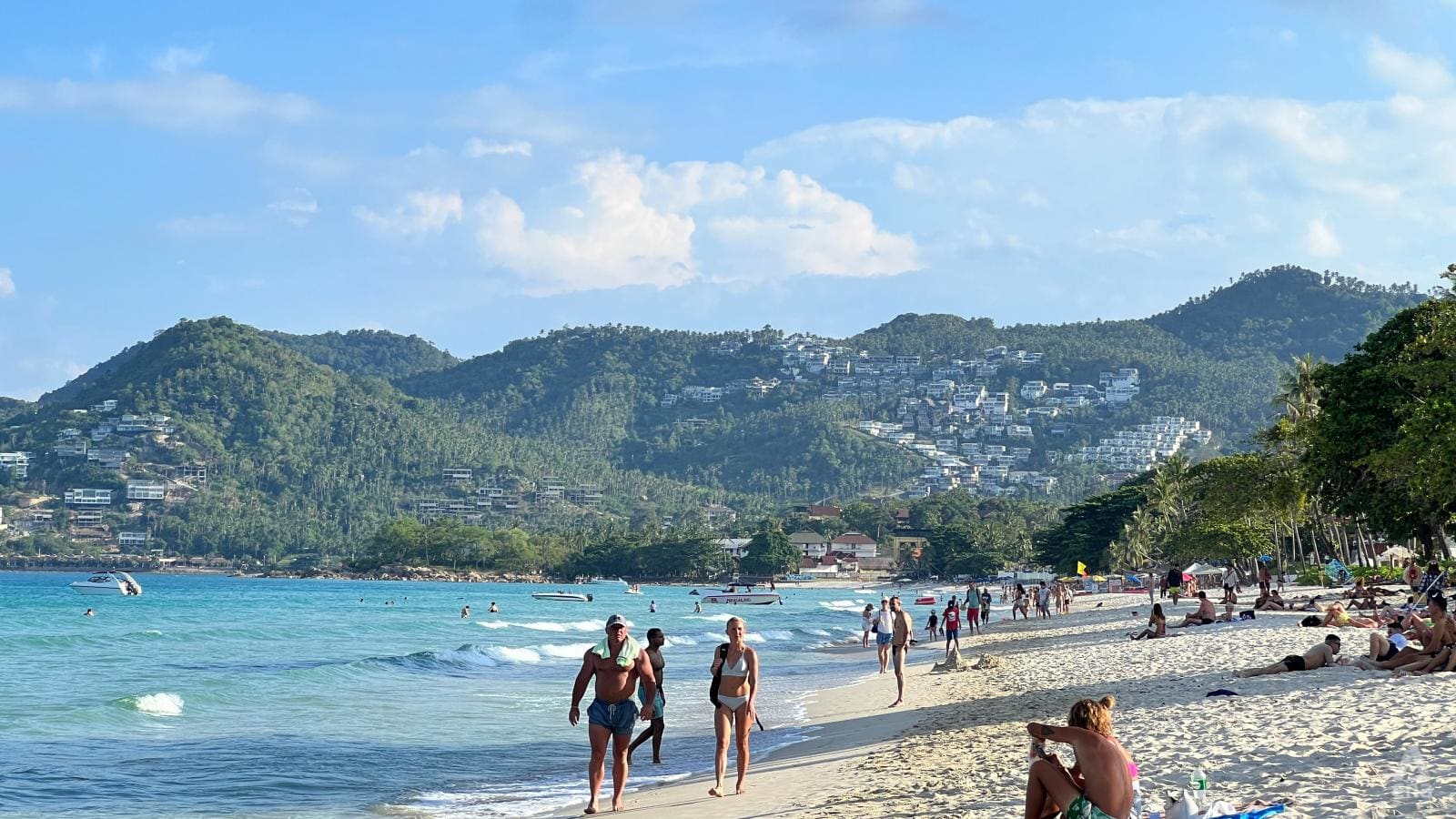
EMBARRASSING BUSINESSES
Today, the main road of Chaweng Beach - the main commercial district - is a sprawling collection of bars and restaurants, cannabis dispensaries and massage joints, flanked by upscale resorts that face the sea.
What most of these establishments have in common - on a regular basis - is unreliable and inequitable access to public water.
When the manager of local business Herbs Massage, Ms Jinda Sri-art, turns on the taps every morning, sometimes they run dry.
In recent months, it has often left her and her customers in embarrassing and awkward situations and forced staff to personally shower clients with buckets of water before their massage.
More discomfort has arisen for staff and customers when toilets cannot be flushed.
“When we get complaints from the customers we have to apologise and explain to them that we are facing a water shortage. However, it makes me feel bad because I feel that we are not a good host. Our place is not ready to deliver good services,” she said.
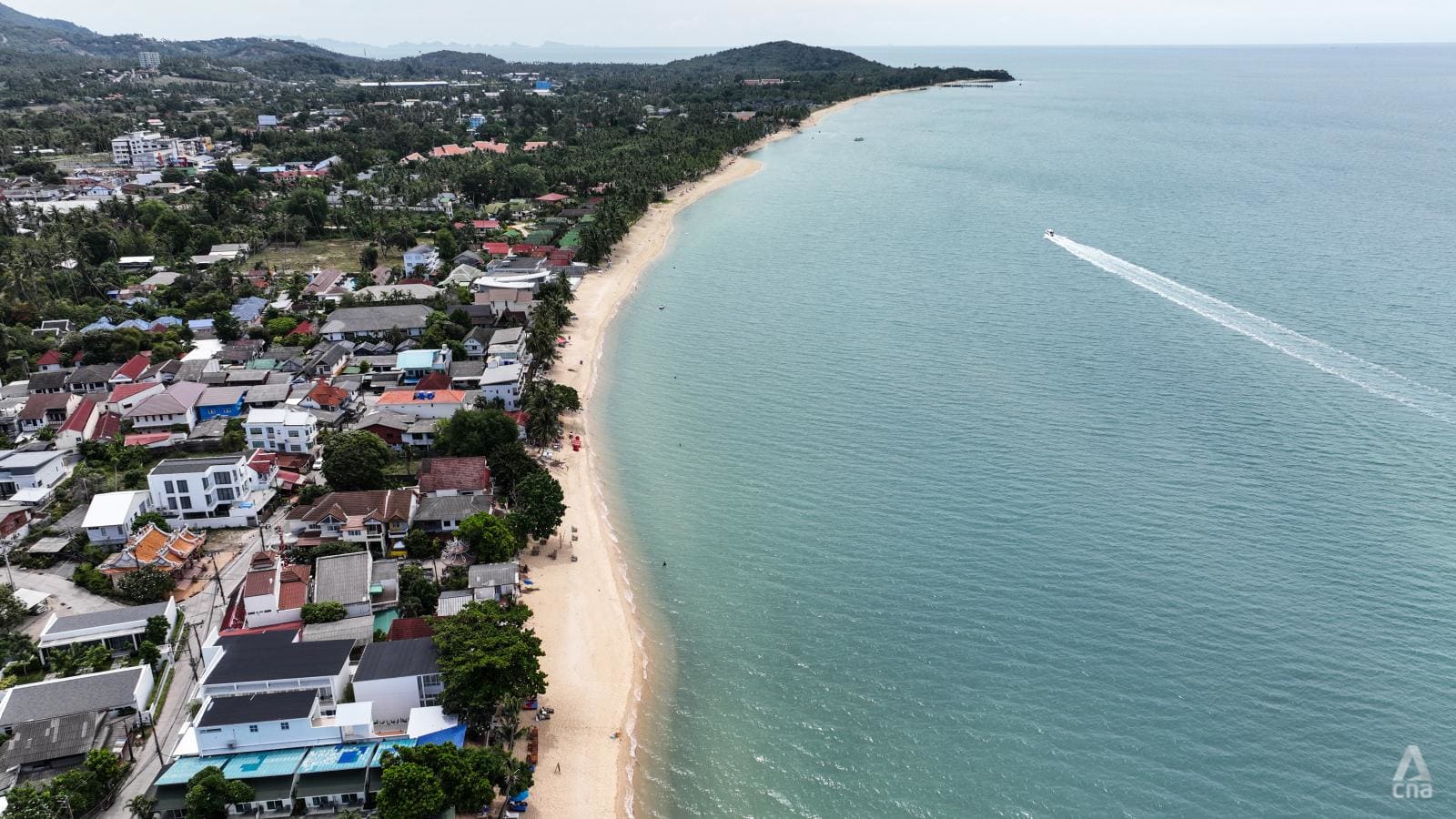
Like most businesses in the area, Ms Jinda has needed to purchase private water. While municipal authorities sometimes provide free water in truck deliveries of their own, she said it is not consistent enough for a business like hers.
Still, to buy from the private water dealers, she has to join an ever-growing queue. Regular, reliable customers - or those with the deepest pockets - are able to jump to the front of it.
“People with water now are really people with power,” said Mr Ratchaporn Poonsawat, president of the Tourism Association of Koh Samui.
“People will need to talk to you. People will have to come to you. Imagine that a hotel with 200 rooms, with full amenities, full facilities, is buying 100 per cent of its water. Who are they coming to?”
Mr Ratchapon owns multiple hotels on the island and is a leading voice for the local tourism industry. He said the situation has become critical, especially with tourism rebounding fast following the pandemic.
“We are in a crisis for water right now. Water as a resource is really scarce. During COVID times people forgot about these problems that exist. And now, when things are coming back, we are facing the same problem,” he said.
The problem is acknowledged by the local government.
“We want to declare Samui as a water-sufficient city but we still cannot do so,” Koh Samui acting mayor Sutham Samthong told CNA.
“If people don't realise they have to save the water, wherever they are in this world, we can never provide sufficient quantities. So we have to raise awareness with the public that water is precious and we have to save it.”
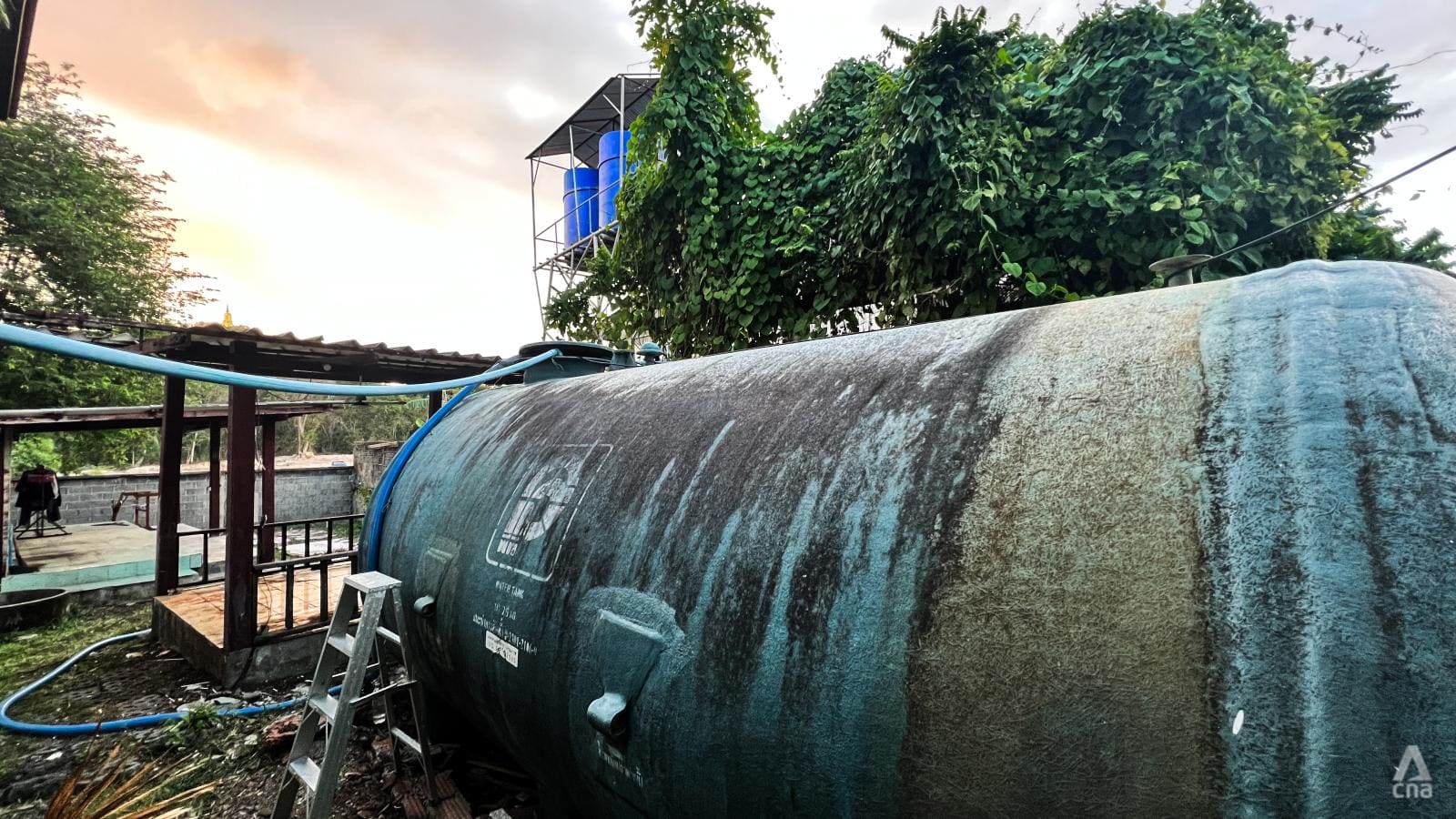
INCREASED COSTS
From large to small, hotels are both victims of the water situation and a primary cause.
W Hotel, a luxury accommodation in the north of the island, has seen a dramatic shift in its water availability this year.
In 2018, the hotel sourced more than 90 per cent of its water needs from the public utility, with the rest purchased from private sources.
In the first six months of 2023 as well as seeing its water use reached new record highs, the ratios have essentially flipped. Only about 10 per cent of water now comes from public sources.
The hotel’s general manager, Ms Jirapha Krataithong, estimates that buying water cost more than US$40,000 last year, a period where about 30 per cent of the hotel’s water came from non-public sources. Already this year, the amount purchased is nearly double the total of 2022.
‘It's not a big cost, but it's also an increase in costs,” she reckoned. “We are grateful that we still have water. Imagine that you don’t have an alternative source.”
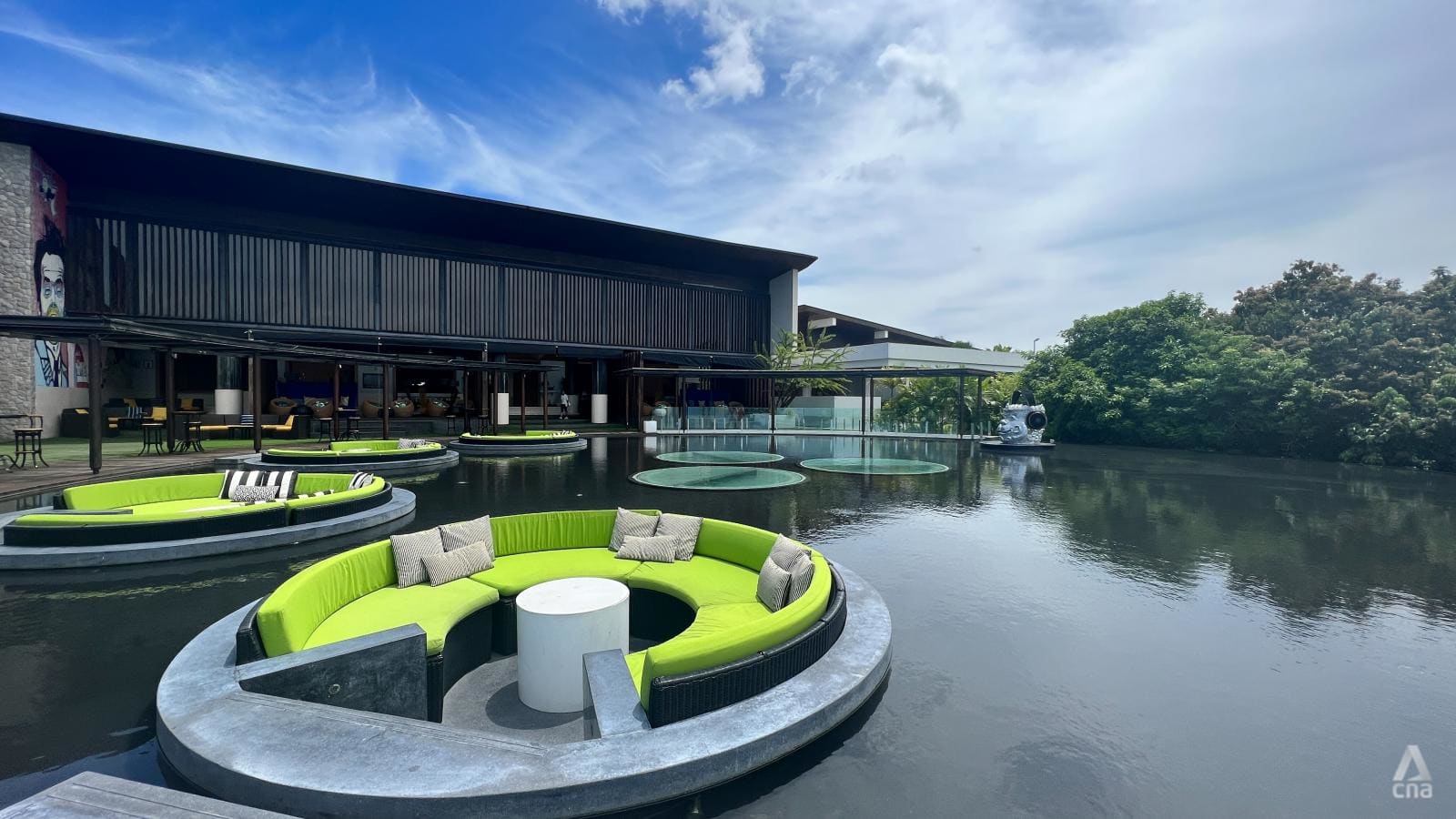
She said the hotel was in the process of identifying and developing its own private deep well to avoid that possibility in the future.
Fellow luxury resort, Sala Samui Chaweng Beach heavily leans on its private wells to keep the hotel running. The hotel’s chief engineer Mr Pairoj Nawan believes the fast development of Samui is to blame for “the imbalance between demand and supply of water”.
He added that all businesses, especially large ones, need contingency plans these days.
“We try to use water sparingly and we try to enhance the capacity of our deep well as an emergency plan. Because when the tap water runs out everyone is chasing to buy water,” said Mr Pairoj.
“In the past, when visitors came here, they found paradise. Now paradise is getting worse,” he said. “I don't want to hear the foreign tourists saying they experienced a water shortage on Samui.”
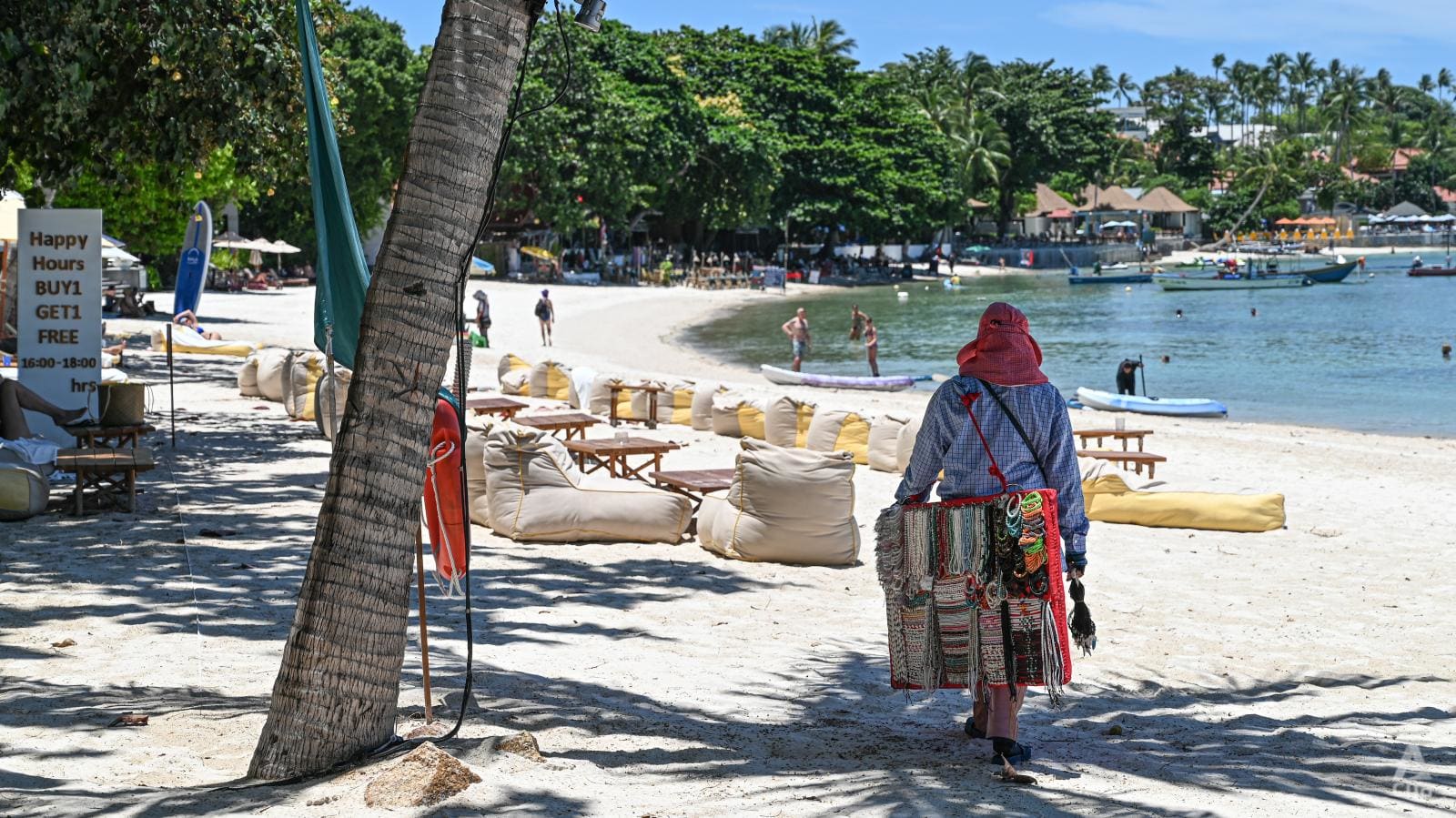
BUDGETARY PRESSURES
An underwater pipeline from the mainland completed in 2019 is the primary source of water to the island.
Local reservoirs can typically provide less than a quarter of Koh Samui’s peak daily water needs, according to officials from the Provincial Waterworks Authority (PWA). They are normally only used during the dry season.
So, when demand ramps up, so too does the amount of water being pumped across to the island - up to about 24,000 cubic metres of the 30,000 required - the equivalent of 12 Olympic-sized swimming pools.
Mr Prateep Kusolwattana, the director of PWA’s regional office in Surat Thani province, explained that there is actually ample water on the mainland to sustainably service Koh Samui.
But there are weather, infrastructure, budgetary and political obstacles that have led to the current situation. Simple maintenance or repair issues on the pipeline can mean the whole island is suddenly thrown into uncertainty.
A lack of rain for the entire year means the backup reservoirs are running perilously low. One reservoir - Pru Krajood - was less than 10 per cent full in August.
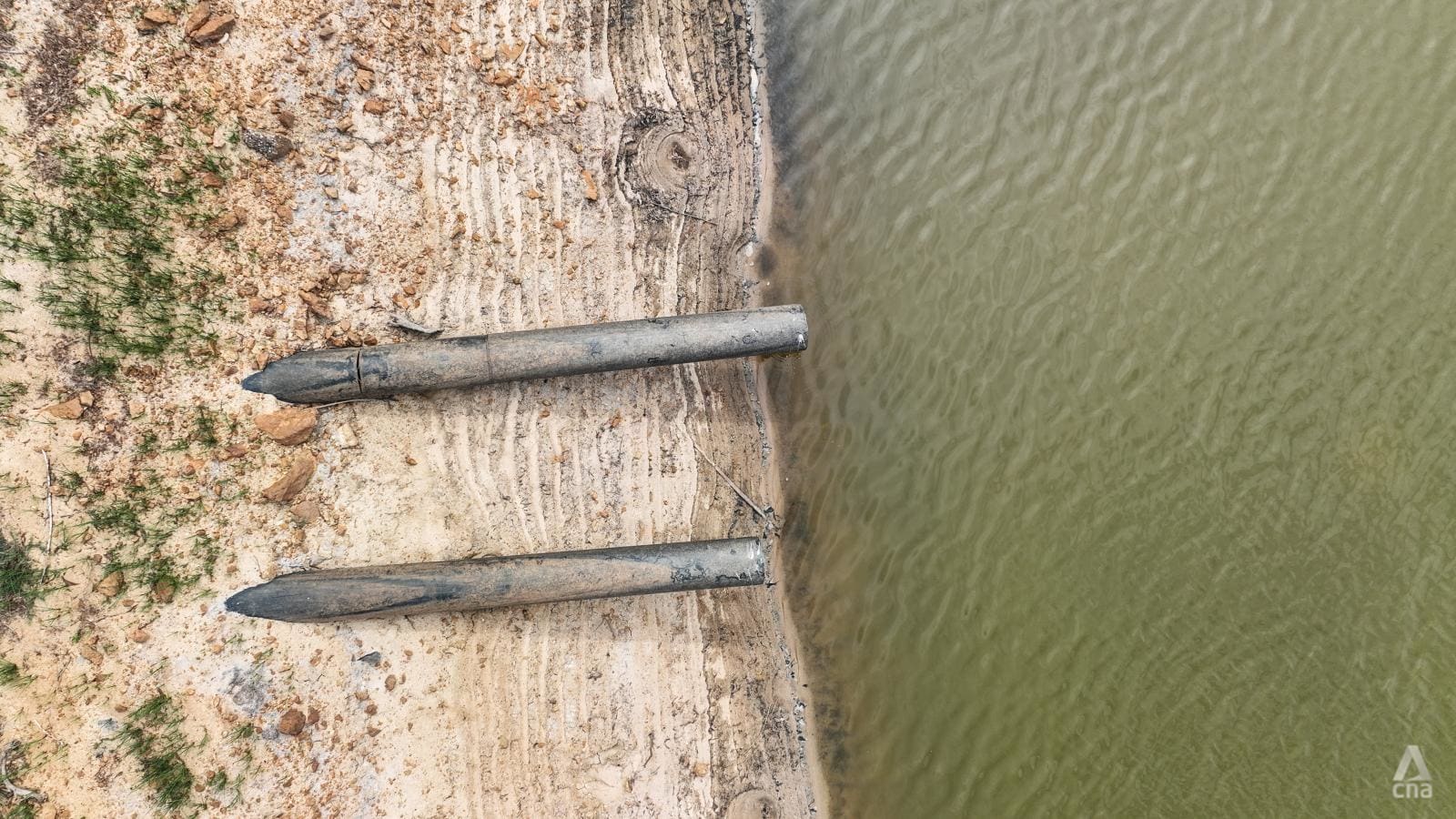
At the same time, PWA said it has received a 24 per cent increase in the number of customers it is meant to service this year, due to the dry conditions.
“Some residents on Samui are not our customers; they use water from their own deep well or shallow well. But once the drought comes, we have to provide our services to all of them as well because their wells are dry,” Mr Prateep said.
There is unlikely to be any major relief to the situation soon. While September and October are the usual wet months on Koh Samui, the onset of El Niño climatic conditions is expected to result in warmer temperatures and less rainfall.
The onset of climate change could result in permanent changes to seasonal weather patterns and prolonged hotter periods, providing less certainty around local water availability.
“Regarding the El Nino effect, this year is just the beginning. But next year will be more serious,” he said.
While a second pipeline to Koh Samui is being planned, it will likely not be operational before 2025. And a proposal to upgrade pipelines on the island itself to improve water delivery - a lack of pressure means any highland areas cannot receive water at present - has a price tag of THB1.5 billion (US$42 million).
Mr Prateep said his team has also been ordered to repair a desalination plant on Koh Samui that remains out of working order.
Given it has not been operational for several years, it needs major repairs for which there is no budget approved. The plant is normally too expensive and energy intensive to run.
Another reservoir at Chaweng Beach that could feasibly help ease the burden on the water shortage situation cannot function due to saltwater intrusion.
“Actually the government has its master plan and each agency concerned is coordinating with each other but the budget of each agency is being allocated at different times, which makes it look like it's a lack of collaboration between state agencies,” Mr Prateep said.
Authorities have resorted to cloud seeding operations to induce rain over the island in previous dry years. But the idea is generally dismissed even by those requesting it due to its unpredictability.
“It did not work well because the rain mostly missed the target as it dropped into the sea, not on the island,” he said.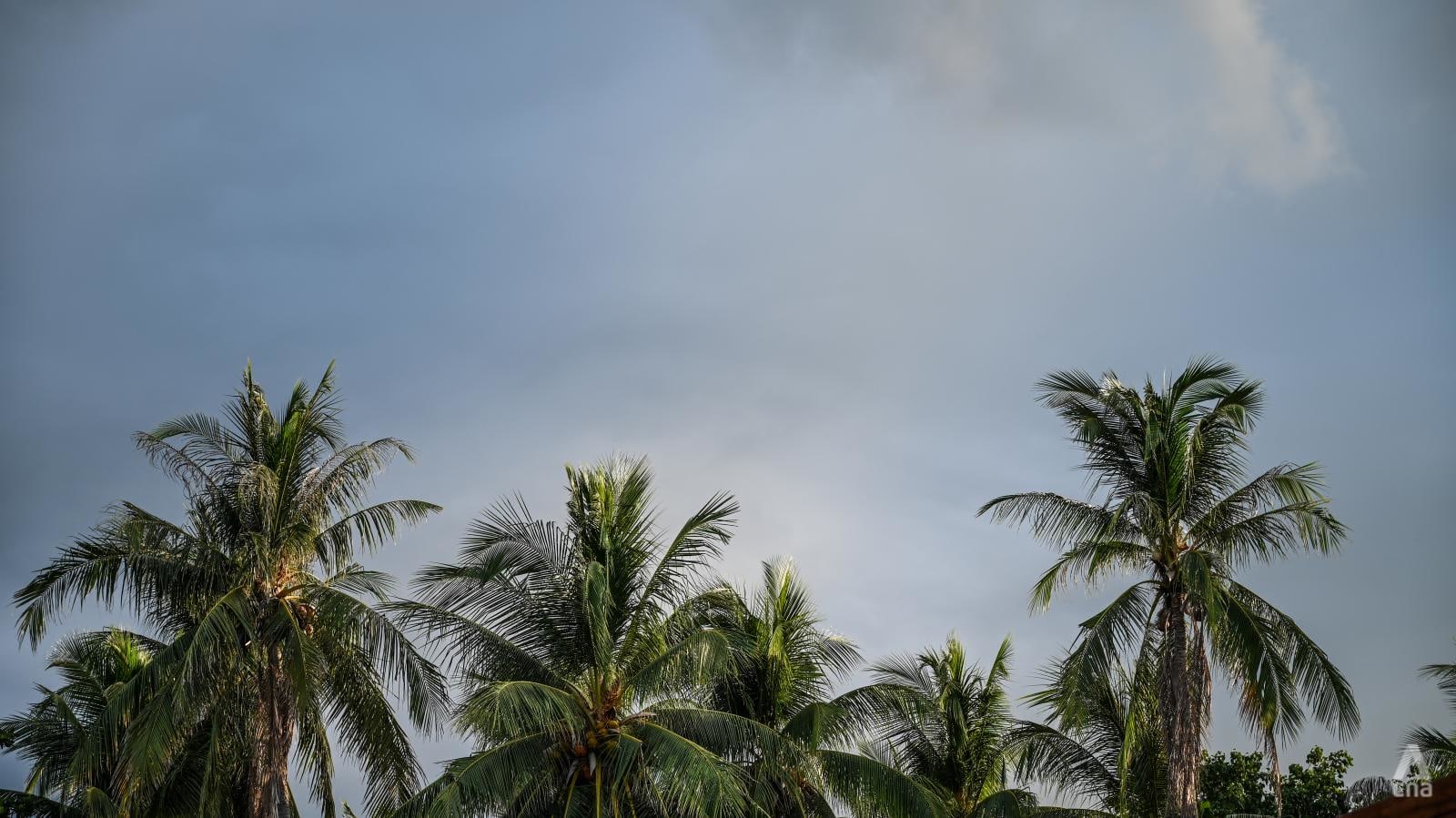
"WHY DO WE HAVE TO SUFFER ALL THIS?"
Multiple stakeholders on Koh Samui told CNA that they want better coordination and planning on the island to ensure it has a sustainable future.
For Mr Ratchaporn from the Tourist Association, that needs to start with the national government prioritising a clearer vision for tourism around the country and allocating resources accordingly.
Koh Samui is not alone in suffering water issues; nearby islands Koh Phangan and Koh Tao are also experiencing serious shortages and water for sale at highly inflated prices.
Phuket also faces the threat of droughts impacting its reservoirs and its government has actively sought new groundwater sources and other recycling options as solutions for the future.
“We have to really put this on the national agenda,” Mr Ratchaporn said.
“Everyone has been speaking a lot about our tourism as our main source of income and the most important economic engine of Thailand. But what about a tourism policy? I haven't seen any (political) parties with a really clear vision on tourism and sustainable development.
“Why do we have to suffer all this? We could understand if it is a phenomenon or is just over a short period of time. That is uncontrollable.
“But we have been expecting this to happen. So we probably need a more solid answer on the direction of where we are heading in the future,” he added.
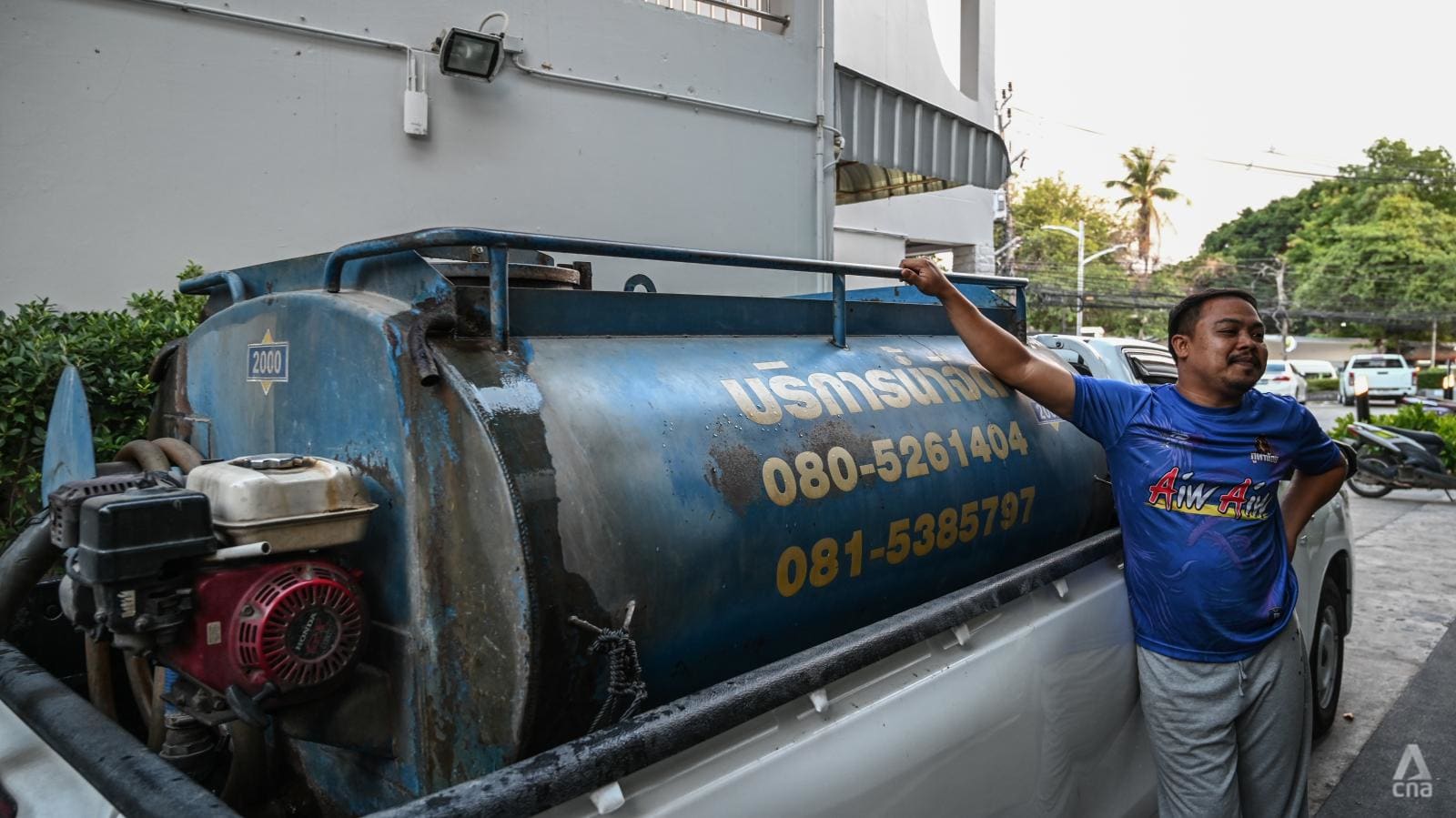
He fears that future investments could be jeopardised because of the extra considerations or costs associated with water supply, which could hamper Koh Samui’s growth.
That might be a bad thing, according to Thammasat’s Dr Kannapa.
She is advocating for slower growth, controlled development, a green movement among hotel operators and better adaptation to climate change.
Until those types of changes are made, it is the small and local communities that will be made even more vulnerable, she argues.
Mr Chokechai Chaisuk, a local security guard, moved to Koh Samui from the mainland five years ago. He had never experienced anything like what he is living through now.
He shares a living compound with his relatives - four families in total - and since May has had no running tap water and has had to purchase it privately at great personal cost.
“It causes us a burden,” he said.
They are precisely the types of community members Dr Kannapa is worried will be left behind, unable to afford what large property groups or developers or conglomerates can to stay afloat.
“We have the seas around, we have the water, we have mountains, we have national parks,” she said, “but why do we lack these kinds of basic needs for the people? It’s become critical."
Additional reporting by Vee Intarakratug.















